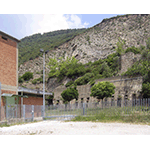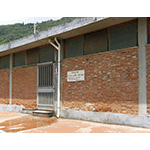Roman Aqueduct
Of the old Roman aqueduct that probably supplied water to the baths of Pisa, today there practically remain only the 8 large arches at Caldaccoli, locality that owes its name to a presumed vernacularization of the Latin calidae aquae [hot waters]. Other remains – pilasters and terracotta pipes – are scattered along the route that starts in the Pisan Mountains and covers almost 11 kilometres. The structures were built with strips of brick alternated with tufa parallelepipeds, disposed in horizontal strips, as also described by local historian Giovanni Nistri in 1875. The beneficiaries of the aqueduct certainly also included Domitian’s Baths (late 1st century A.D.), commonly known as "Nero’s Baths", the only architectural remains of Roman Pisa still visible today. The complex of arches of the Caldaccoli aqueduct are today located on private property.
****************************
Texts by Elena Fani
English translation by Victor Beard
Last update 09/gen/2008





